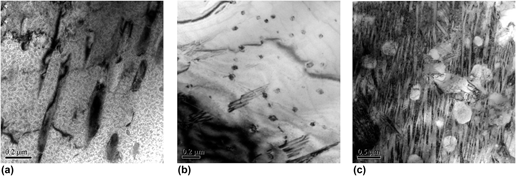Crossref Citations
This article has been cited by the following publications. This list is generated based on data provided by
Crossref.
Araujo, Aylanna Priscila Marques de
Simões, Jackson de Brito
and
Araújo, Carlos José de
2017.
Analysis of Compositional Modification of Commercial Aluminum Bronzes to Obtain Functional Shape Memory Properties.
Materials Research,
Vol. 20,
Issue. suppl 2,
p.
331.
Alkelae, Fathia
and
Sasaki, Shinya
2020.
Tribological and Mechanical Characterization of Nickel Aluminium Bronze (NAB) Manufactured by Laser Powder-Bed Fusion (L-PBF).
Tribology Online,
Vol. 15,
Issue. 3,
p.
126.
Öztürk, Sultan
Sünbül, Sefa Emre
Metoğlu, Abdurrahim
and
İÇİN, Kürşat
2020.
Improvement of microstructure, tribology and corrosion characteristics of nickel-aluminum bronze by P/M method.
Tribology International,
Vol. 151,
Issue. ,
p.
106519.
Ma, Shuo
Yang, Xiaobin
Fu, Liming
and
Shan, Aidang
2023.
Achieving high strength-ductility synergy in nickel aluminum bronze alloy via a quenching-aging-tempering heat treatment.
Materials Letters,
Vol. 333,
Issue. ,
p.
133661.
Ma, Shuo
Shen, Zhao
Yang, Xiaobin
Ju, Jiang
Zeng, Xiaoqin
Fu, Liming
and
Shan, Aidang
2024.
Observation of the formation of CuAl2O4 by the direct consumption of Al2O3 in an NAB alloy at elevated temperature.
Corrosion Science,
Vol. 232,
Issue. ,
p.
112026.
Jiang, Hao
Zhang, Xuebin
Yang, Ran
Zhou, Yanjun
Huang, Shuhui
Yu, Yan
Yang, Wenhao
Yu, Bo
Liu, Dongdong
Jiang, Kaixuan
and
Huang, Kuan
2024.
Microstructure evolution and mechanical behavior of Cu-7Ni-7Al-4Fe-2Mn alloy via a quenching-aging heat treatment.
Materials Today Communications,
Vol. 38,
Issue. ,
p.
108152.
Du, Yang
Dong, Yiheng
Ma, Shuo
Yang, Xiaobin
Ju, Jiang
Shen, Zhao
Suo, Zhongyuan
Fu, Liming
and
Shan, Aidang
2024.
Insight into the tribological behavior of the dual-phase nickel aluminum bronze alloy by multiscale characterization.
Wear,
Vol. 556-557,
Issue. ,
p.
205530.
Yang, Xiaobin
Liu, Deyun
Kuang, Siyu
Yin, Kai
Ye, Cong
Dong, Yiheng
Ju, Jiang
Shen, Zhao
Ma, Shuo
Fu, Liming
and
Shan, Aidang
2025.
Outstanding strength-ductility combination in NAB alloy via coarse Widmanstätten α phases and ultrafine (α+κ) lamella structure.
Materials Science and Engineering: A,
Vol. 920,
Issue. ,
p.
147565.
Marković, Ivana
Banković, Marko
Manasijević, Dragan
Balanović, Ljubiša
and
Petrović, Jasmina
2025.
Influence of aging heat treatment on microstructure and mechanical properties of CuAl9Ni3Fe3 bronze.
Materials Science and Technology,
